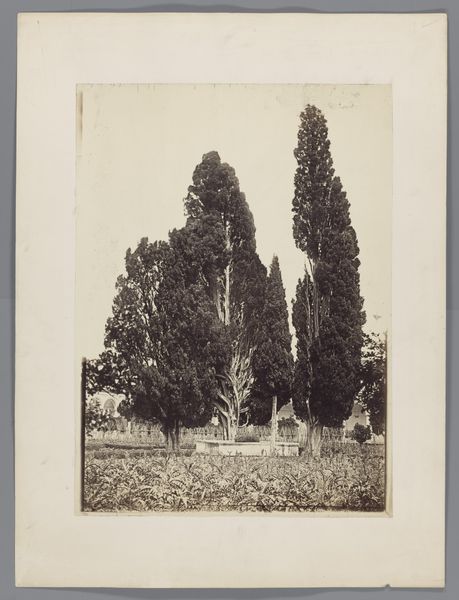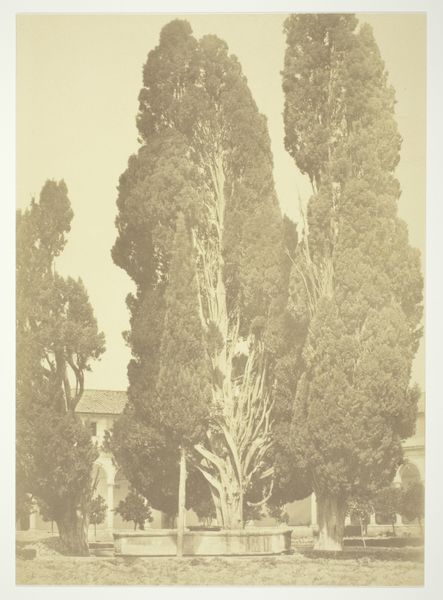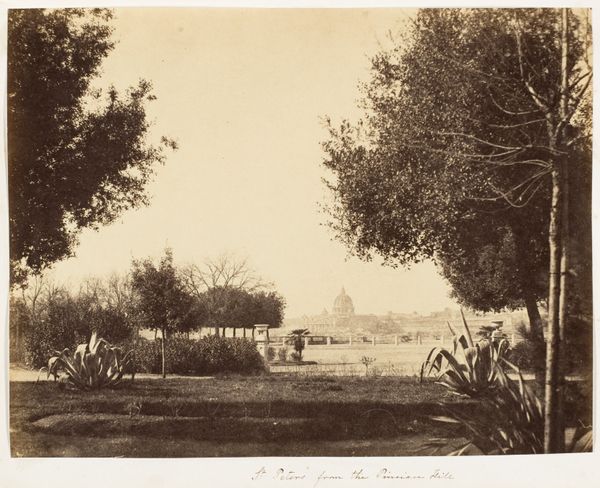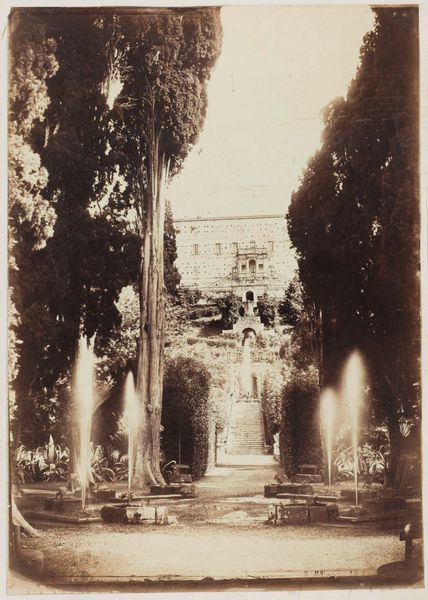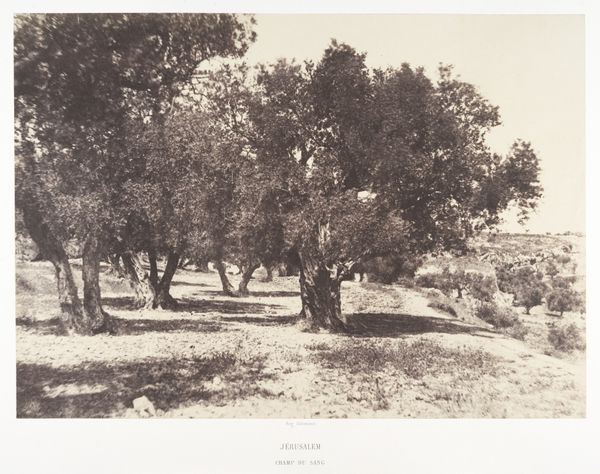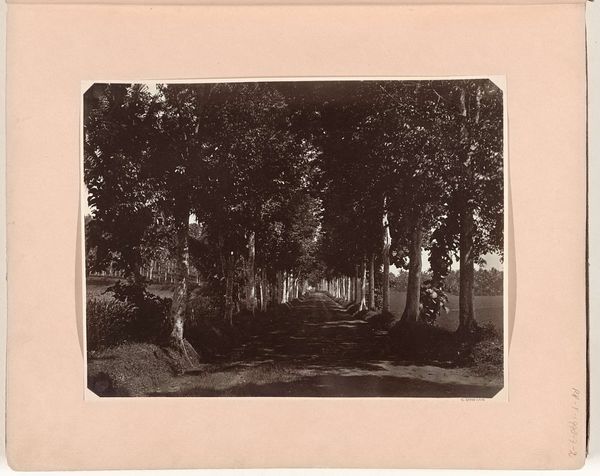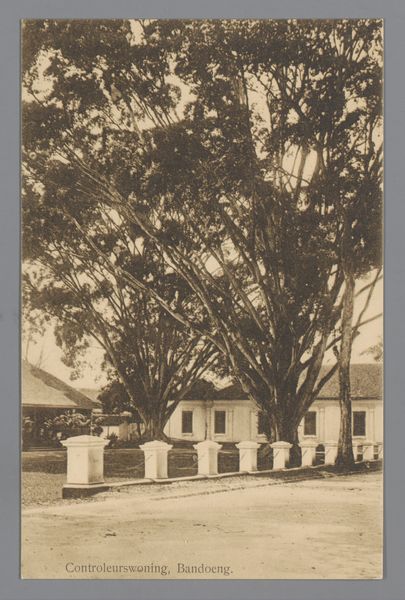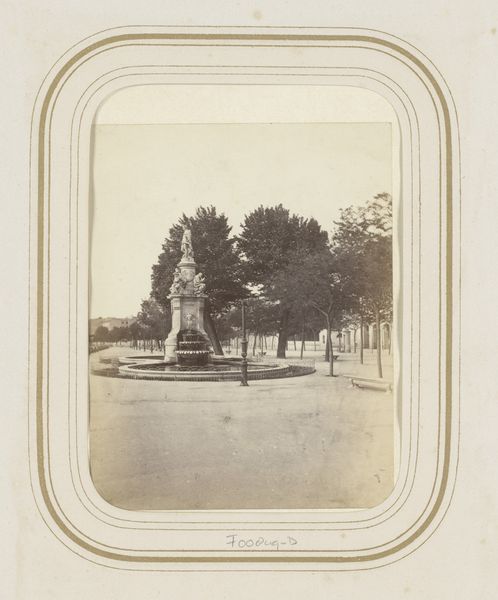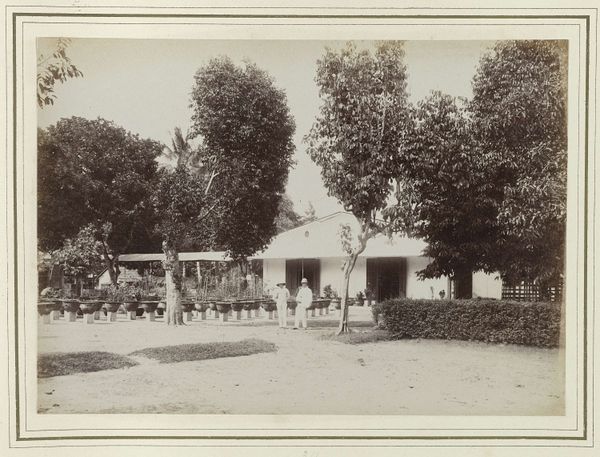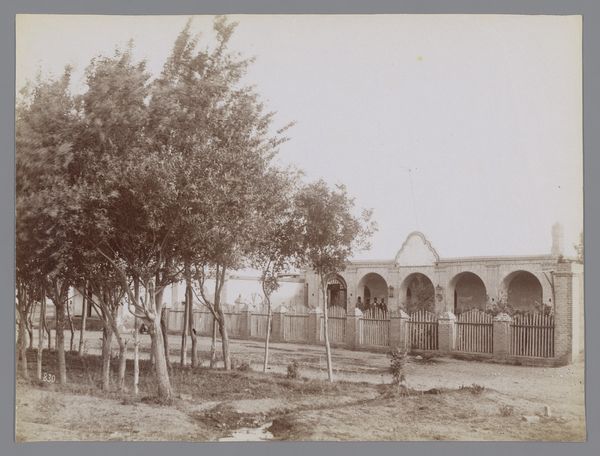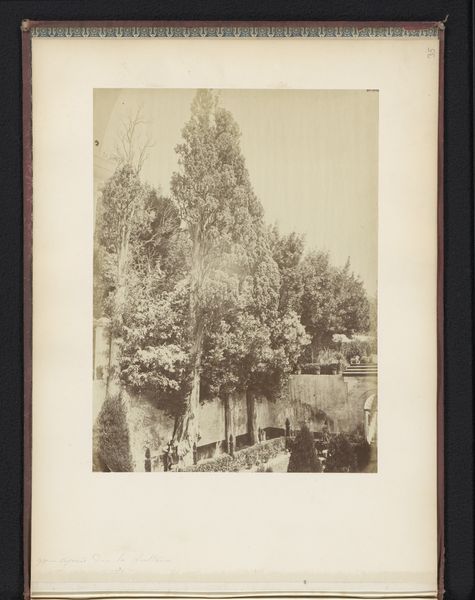
Old Cypress Trees in Carthusian Convent, Rome 1853 - 1856
0:00
0:00
Dimensions: Image: 24.9 × 19.7 cm (9 13/16 × 7 3/4 in.)
Copyright: Public Domain
Curator: We're looking at "Old Cypress Trees in Carthusian Convent, Rome," a gelatin-silver print, likely produced between 1853 and 1856, taken by Jane Martha St. John. The print captures a serene view now housed at The Metropolitan Museum of Art. Editor: My immediate reaction is the incredible stillness. The muted sepia tones lend an almost dreamlike, otherworldly quality to what otherwise might be a mundane garden scene. There’s a gravitas, an almost sepulchral mood in the scene before us. Curator: That gravity, I think, arises from the careful interplay of forms. Note the sharp contrast between the robust, densely packed foliage and the smooth architectural planes, the rhythmic geometry of the convent cloisters balancing nature’s exuberance. Editor: Precisely! And it hints at the dialogue between nature and organized religion—the individual amongst the collective. The cypresses themselves have long symbolized mourning, and that stark presence, looming over the clearly regimented space, makes one contemplate about historical themes that engage with intersectional narratives that concern life, death, and spirituality. Curator: Indeed, and the romantic composition, common in the photography of this period, uses these strong verticals to guide the eye skyward. Even the placement of the small figures within the arched passageways reinforces a sense of perspective and heightens the grandeur of the natural elements. The technical quality, though aged, gives an incredible range to tonal subtleties. Editor: Absolutely. Think too about the accessibility. Here, this photography offered ordinary people a glimpse into a cloistered world, maybe stirring curiosity or even anxieties about the nature of religious dedication and self-imposed limitations— especially women within these confines, so frequently rendered invisible and mute. What liberties would photography, plein-air photography, allow such people? Curator: Considering how the formal elements convey narrative underscores photography's role in communicating beyond pure representation—offering not just record, but emotion. Editor: Exactly, it demonstrates how what’s omitted becomes as revealing as what’s included. Curator: Seeing how it uses light and shadow underscores how seemingly neutral landscape reveals volumes regarding personal experiences and broader historical realities.
Comments
No comments
Be the first to comment and join the conversation on the ultimate creative platform.
